Vladimir I. Iglovikov
Breast Tumor Cellularity Assessment using Deep Neural Networks
May 05, 2019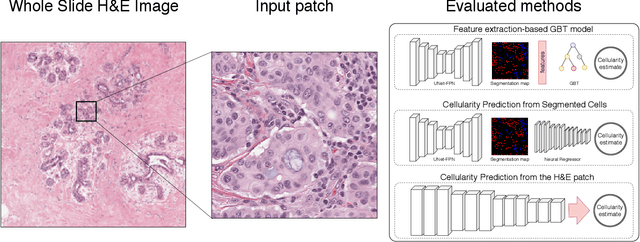

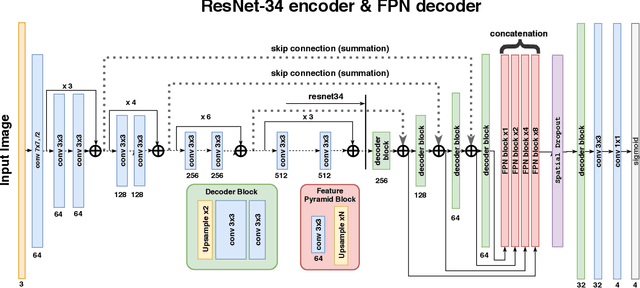
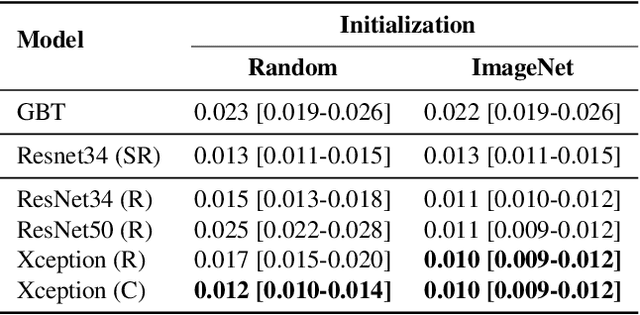
Abstract:Breast cancer is one of the main causes of death worldwide. Histopathological cellularity assessment of residual tumors in post-surgical tissues is used to analyze a tumor's response to a therapy. Correct cellularity assessment increases the chances of getting an appropriate treatment and facilitates the patient's survival. In current clinical practice, tumor cellularity is manually estimated by pathologists; this process is tedious and prone to errors or low agreement rates between assessors. In this work, we evaluated three strong novel Deep Learning-based approaches for automatic assessment of tumor cellularity from post-treated breast surgical specimens stained with hematoxylin and eosin. We validated the proposed methods on the BreastPathQ SPIE challenge dataset that consisted of 2395 image patches selected from whole slide images acquired from 64 patients. Compared to expert pathologist scoring, our best performing method yielded the Cohen's kappa coefficient of 0.70 (vs. 0.42 previously known in literature) and the intra-class correlation coefficient of 0.89 (vs. 0.83). Our results suggest that Deep Learning-based methods have a significant potential to alleviate the burden on pathologists, enhance the diagnostic workflow, and, thereby, facilitate better clinical outcomes in breast cancer treatment.
Albumentations: fast and flexible image augmentations
Sep 18, 2018
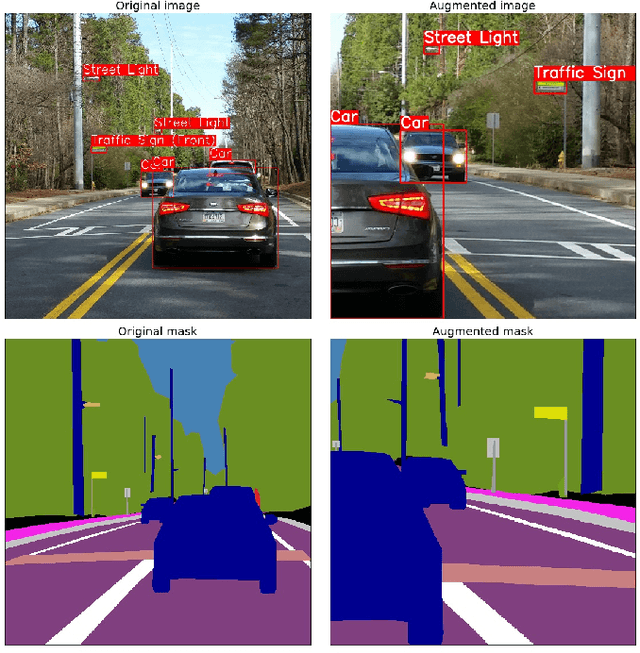

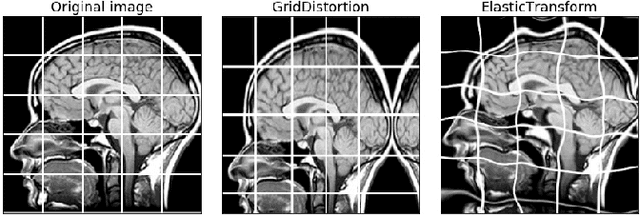
Abstract:Data augmentation is a commonly used technique for increasing both the size and the diversity of labeled training sets by leveraging input transformations that preserve output labels. In computer vision domain, image augmentations have become a common implicit regularization technique to combat overfitting in deep convolutional neural networks and are ubiquitously used to improve performance. While most deep learning frameworks implement basic image transformations, the list is typically limited to some variations and combinations of flipping, rotating, scaling, and cropping. Moreover, the image processing speed varies in existing tools for image augmentation. We present Albumentations, a fast and flexible library for image augmentations with many various image transform operations available, that is also an easy-to-use wrapper around other augmentation libraries. We provide examples of image augmentations for different computer vision tasks and show that Albumentations is faster than other commonly used image augmentation tools on the most of commonly used image transformations. The source code for Albumentations is made publicly available online at https://github.com/albu/albumentations
Fully Convolutional Network for Automatic Road Extraction from Satellite Imagery
Jun 19, 2018

Abstract:Analysis of high-resolution satellite images has been an important research topic for traffic management, city planning, and road monitoring. One of the problems here is automatic and precise road extraction. From an original image, it is difficult and computationally expensive to extract roads due to presences of other road-like features with straight edges. In this paper, we propose an approach for automatic road extraction based on a fully convolutional neural network of U-net family. This network consists of ResNet-34 pre-trained on ImageNet and decoder adapted from vanilla U-Net. Based on validation results, leaderboard and our own experience this network shows superior results for the DEEPGLOBE - CVPR 2018 road extraction sub-challenge. Moreover, this network uses moderate memory that allows using just one GTX 1080 or 1080ti video cards to perform whole training and makes pretty fast predictions.
Feature Pyramid Network for Multi-Class Land Segmentation
Jun 19, 2018

Abstract:Semantic segmentation is in-demand in satellite imagery processing. Because of the complex environment, automatic categorization and segmentation of land cover is a challenging problem. Solving it can help to overcome many obstacles in urban planning, environmental engineering or natural landscape monitoring. In this paper, we propose an approach for automatic multi-class land segmentation based on a fully convolutional neural network of feature pyramid network (FPN) family. This network is consisted of pre-trained on ImageNet Resnet50 encoder and neatly developed decoder. Based on validation results, leaderboard score and our own experience this network shows reliable results for the DEEPGLOBE - CVPR 2018 land cover classification sub-challenge. Moreover, this network moderately uses memory that allows using GTX 1080 or 1080 TI video cards to perform whole training and makes pretty fast predictions.
TernausNetV2: Fully Convolutional Network for Instance Segmentation
Jun 19, 2018
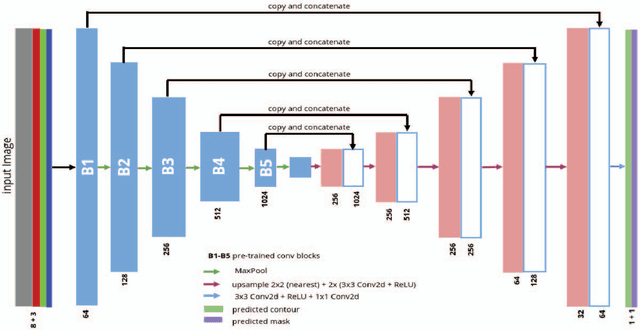
Abstract:The most common approaches to instance segmentation are complex and use two-stage networks with object proposals, conditional random-fields, template matching or recurrent neural networks. In this work we present TernausNetV2 - a simple fully convolutional network that allows extracting objects from a high-resolution satellite imagery on an instance level. The network has popular encoder-decoder type of architecture with skip connections but has a few essential modifications that allows using for semantic as well as for instance segmentation tasks. This approach is universal and allows to extend any network that has been successfully applied for semantic segmentation to perform instance segmentation task. In addition, we generalize network encoder that was pre-trained for RGB images to use additional input channels. It makes possible to use transfer learning from visual to a wider spectral range. For DeepGlobe-CVPR 2018 building detection sub-challenge, based on public leaderboard score, our approach shows superior performance in comparison to other methods. The source code corresponding pre-trained weights are publicly available at https://github.com/ternaus/TernausNetV2
 Add to Chrome
Add to Chrome Add to Firefox
Add to Firefox Add to Edge
Add to Edge